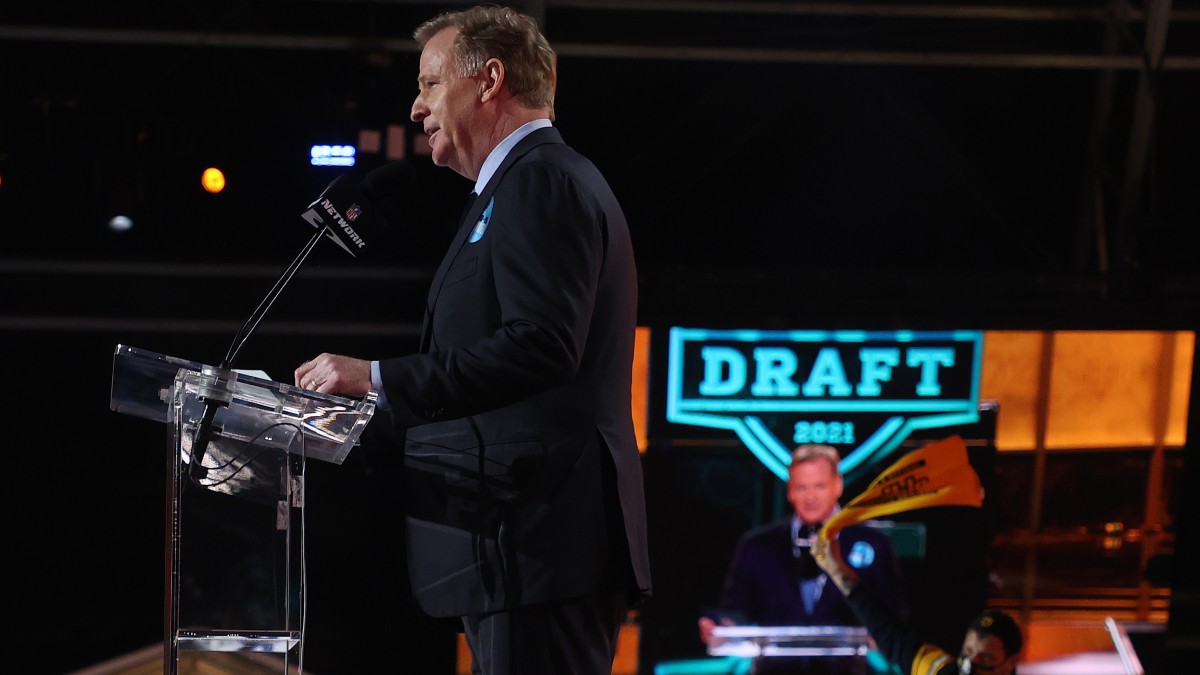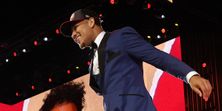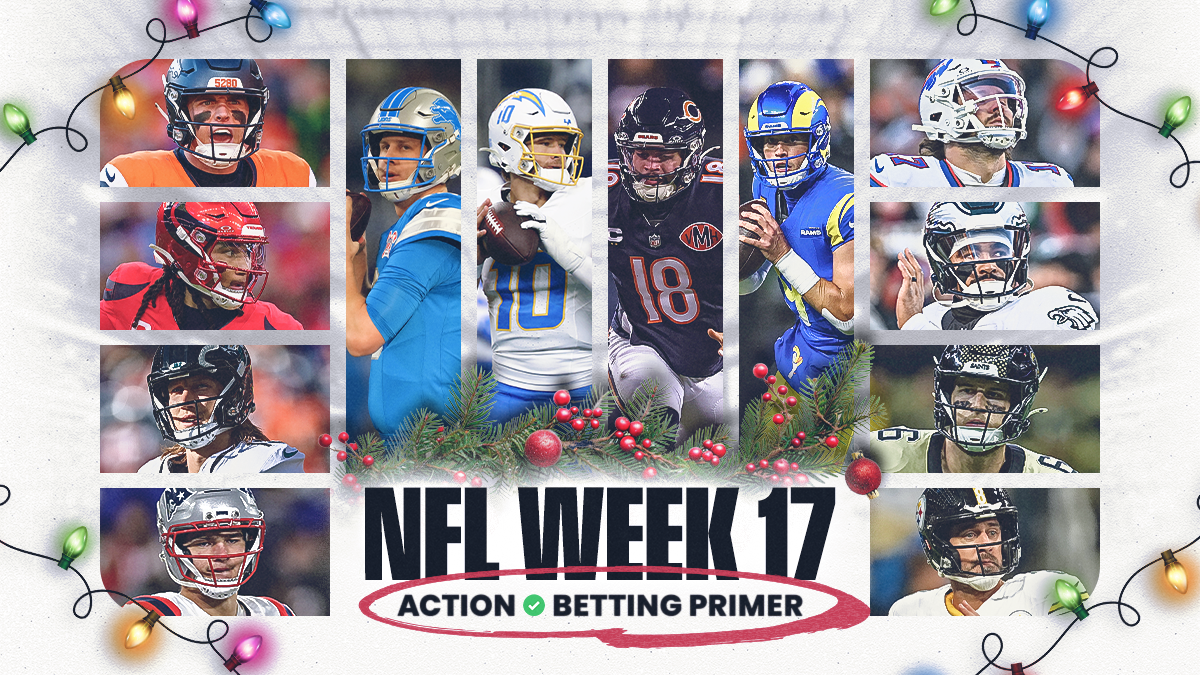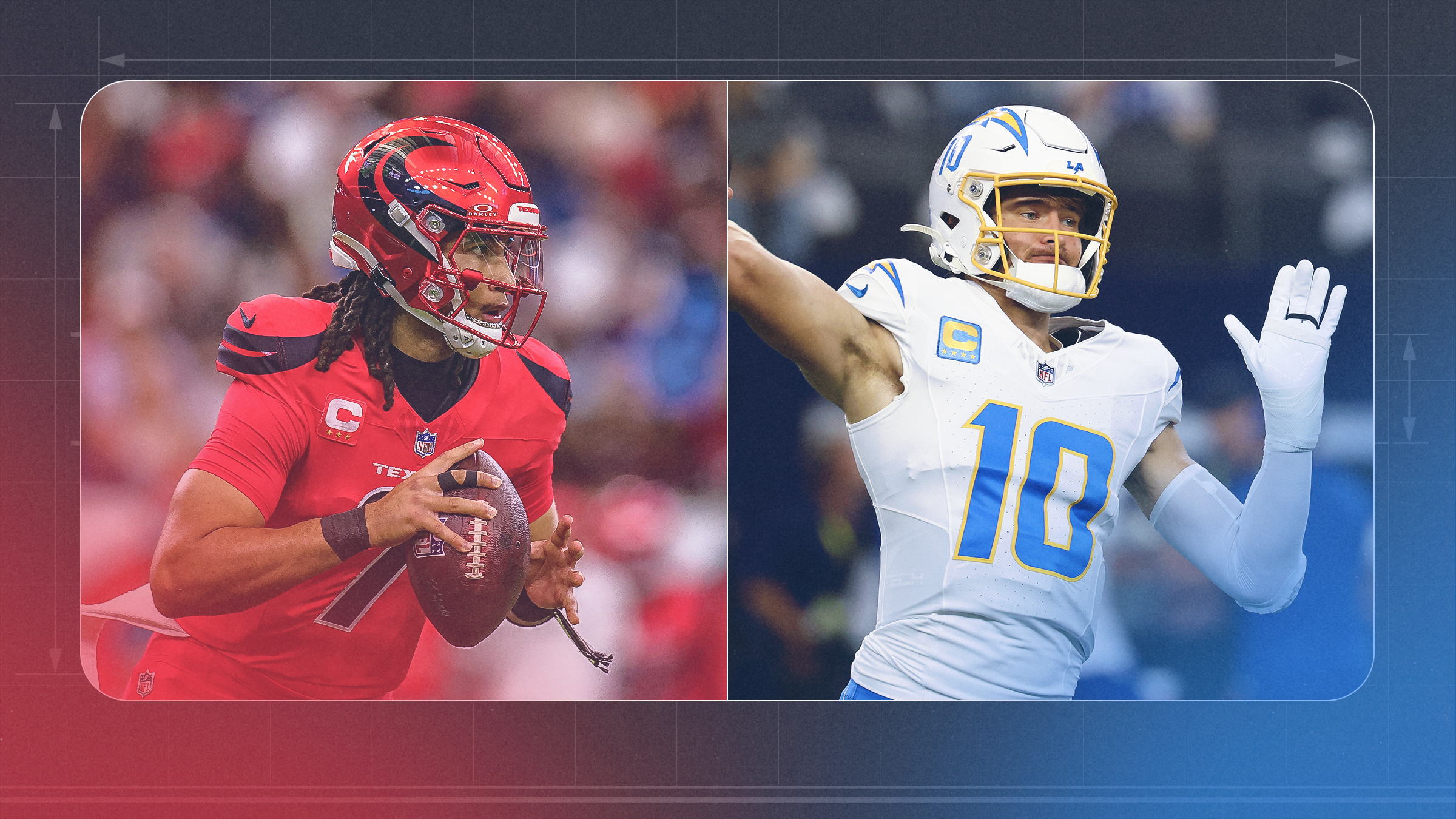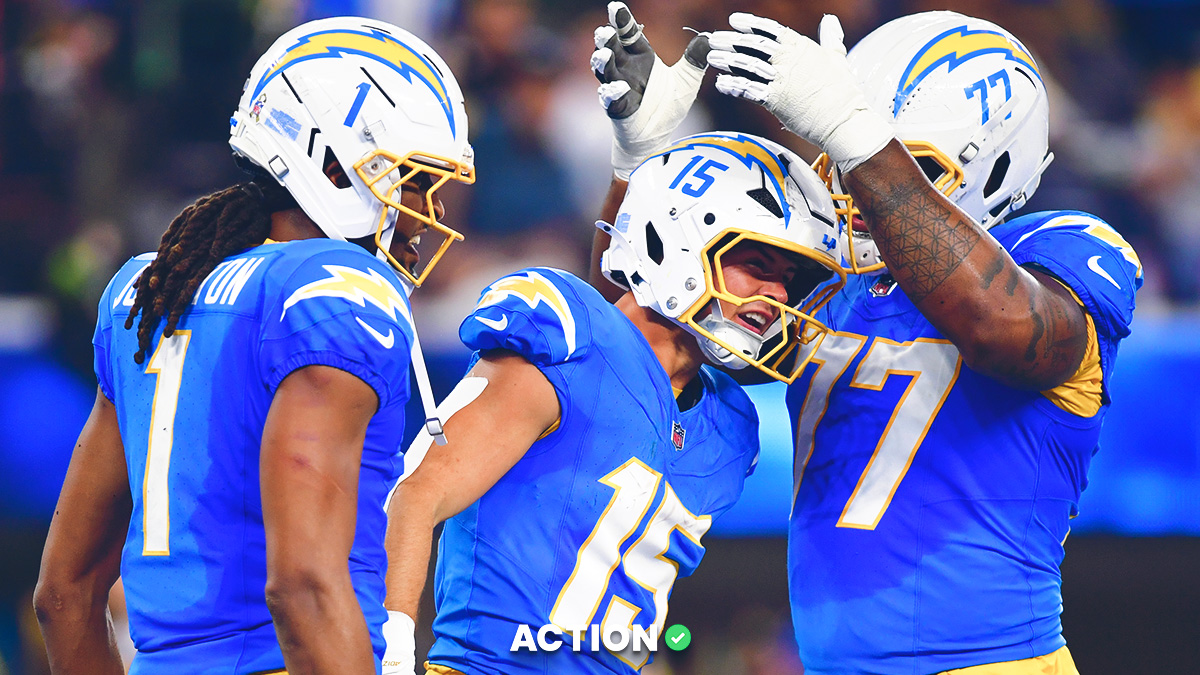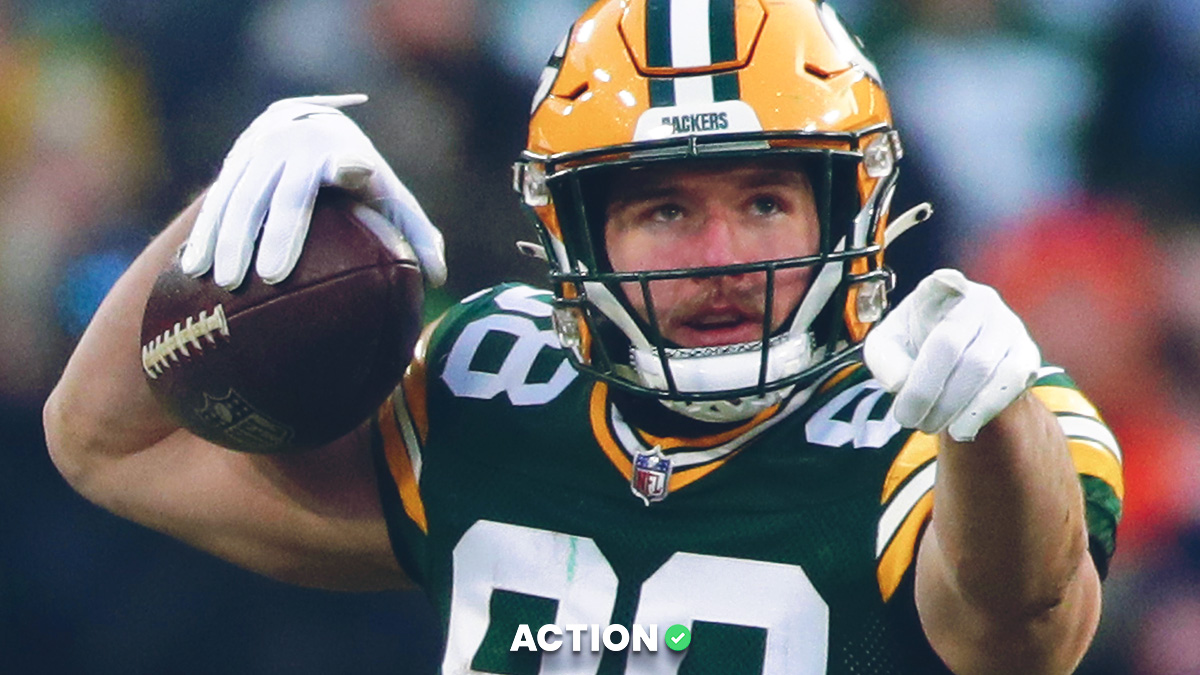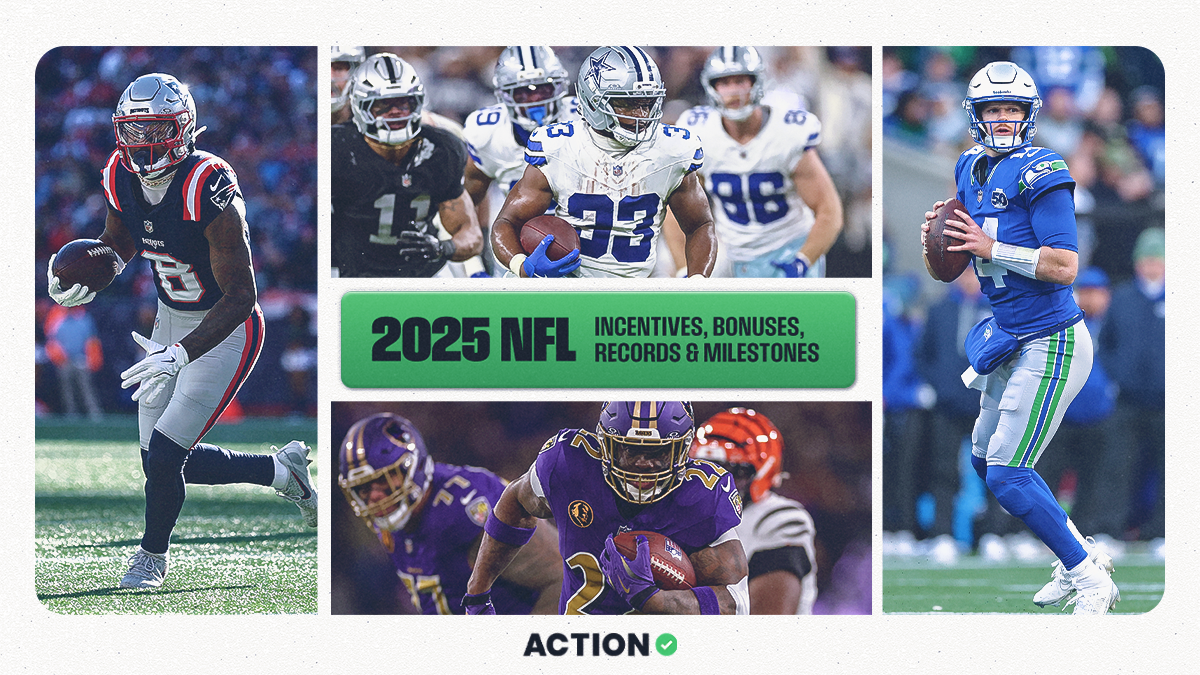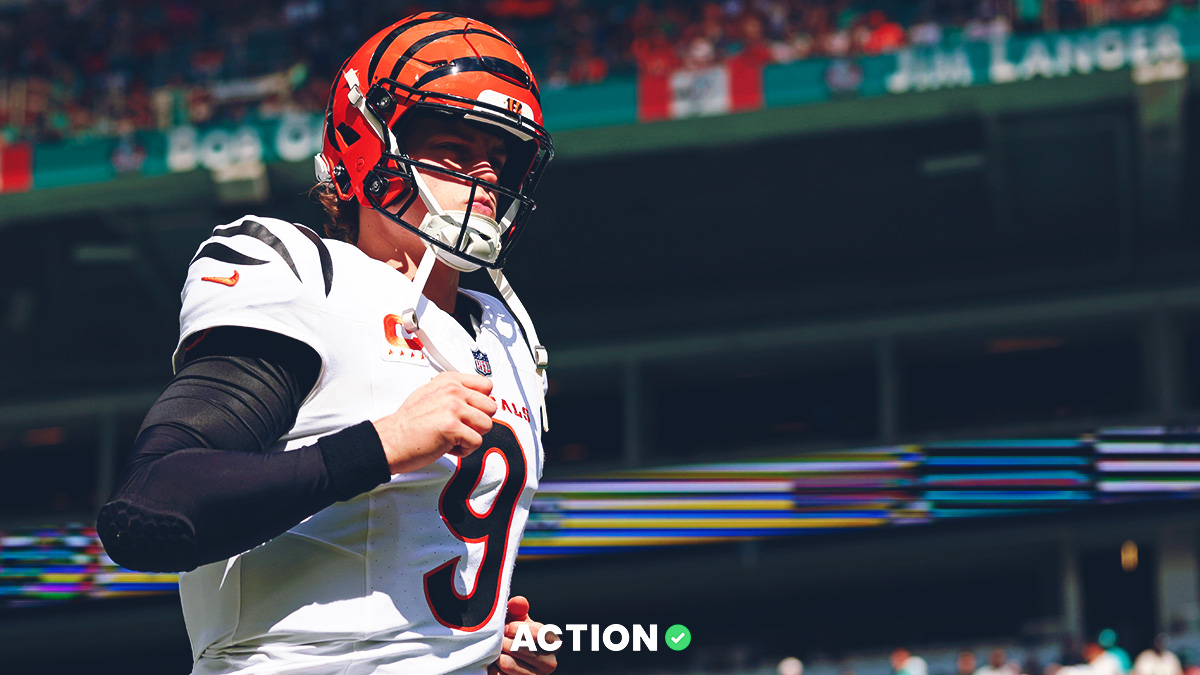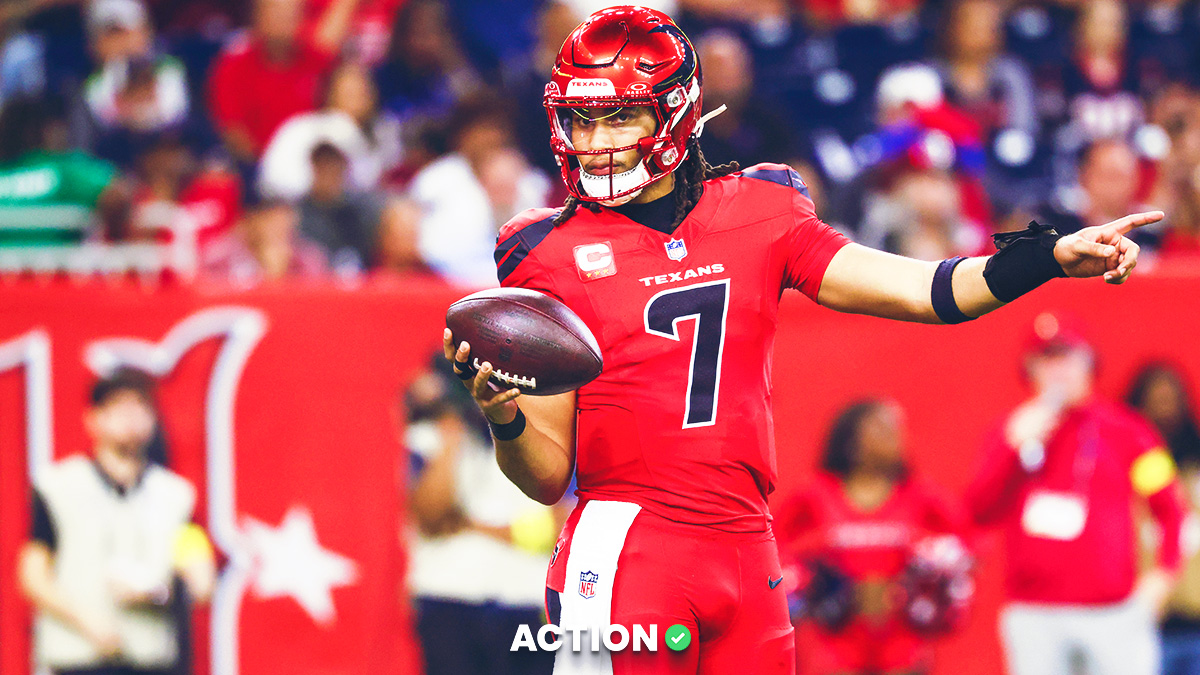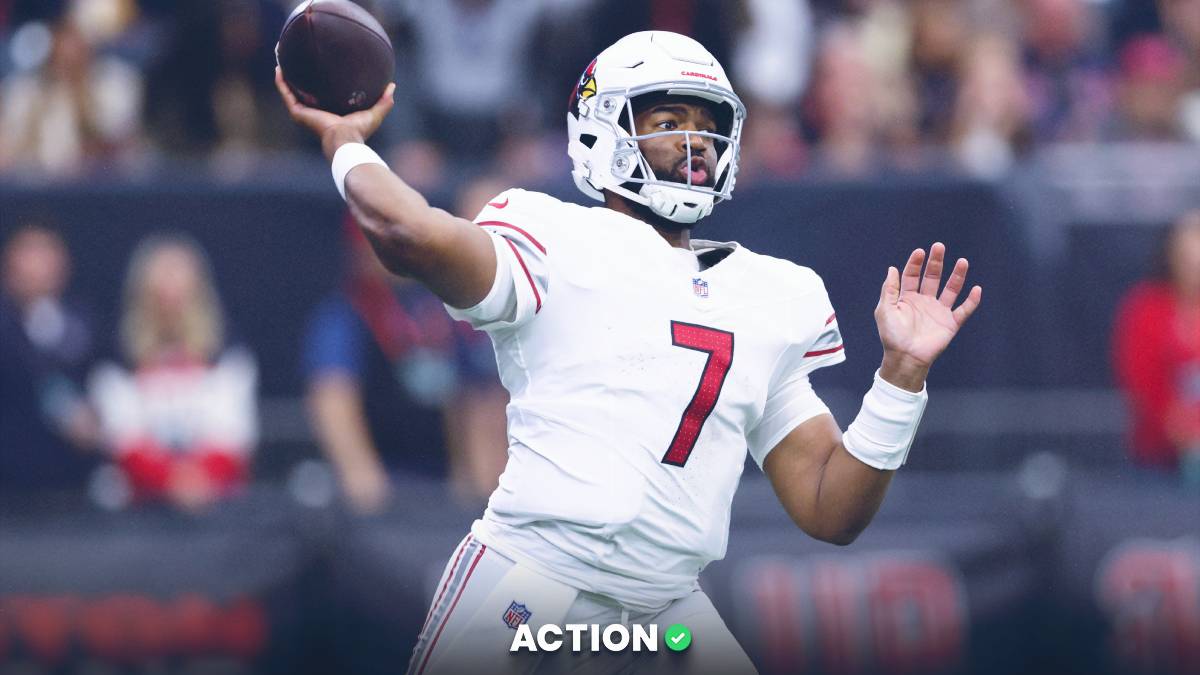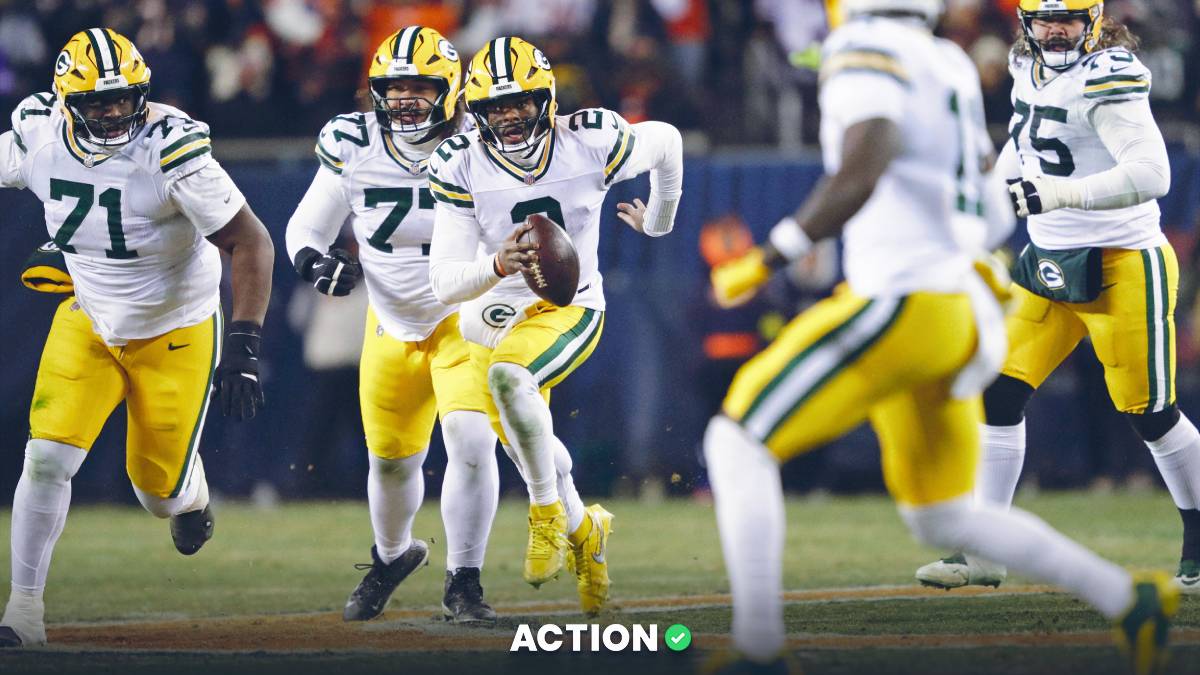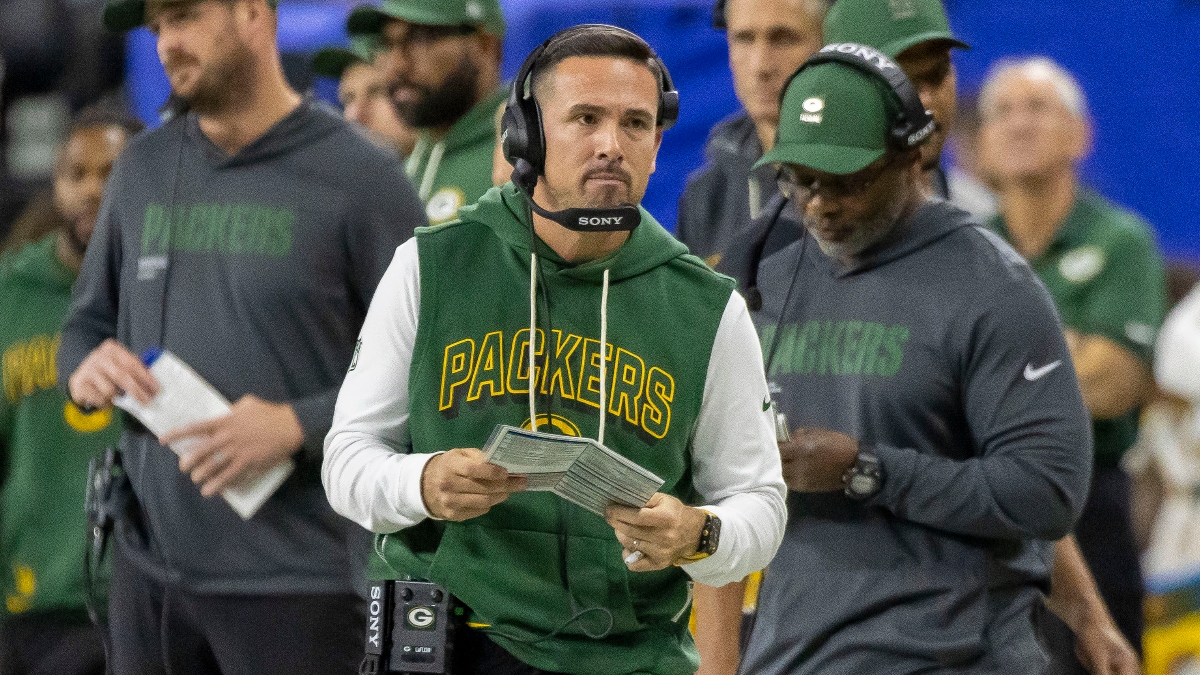Now that we are a week removed from Day 1 of the 2021 NFL Draft and I've had time to sort through all my bets (and write my massive post-draft top 50 rookie dynasty rankings breakdown), I want to put in writing some thoughts on how this draft (and my bets) went.
Overall, I'm proud of my performance.
I've gone through all the NFL draft bets I tracked on Twitter, in the @ActionApp and in @ActionNetworkHQ articles.
298 bets in total: A LOT.
Final result: 158-140, +26.8 units.
It could have been better — and worse.
I'll have a piece next week breaking down my takeaways.
— Matthew Freedman (@MattFtheOracle) May 2, 2021
My first year betting on the draft was 2018, and although I didn't formally track all my bets at the time, I know I finished profitably that year, as I was heavy on two positions: Saquon Barkley to the Giants at No. 2 and over 4.5 quarterbacks in Round 1.
That was also the first year I did a mock draft, but I didn't submit it in any competitions because I honestly didn't know how to do it.
In the three years since then, I have tracked all of my draft bets and submitted my mocks in the FantasyPros Accuracy Contest (as well as other contests).
Overall, I've done well.
- 2019: 54-29 (+17.7 units), No. 20 (tied) at FantasyPros
- 2020: 124-88 (+26.2 units), No. 6 at FantasyPros
- 2021: 158-140 (+32.0 units), No. 19 at FantasyPros
Note: When I originally posted my 2021 draft betting performance on Twitter, I miscalculated some of my units won and undersold my profits.
This year for the first time I also entered a top 100 big board into a contest at The Huddle Report: I finished tied for No. 17, which I was very pleased with, considering that I pulled my top 100 together in just a few hours.
Out of the contests that publicize exactly how they score mocks, FantasyPros has in my opinion what is the most robust scoring system, as it awards points based on draft position, positional rankings, team-position accuracy and team-player matches.
If a mocker does well in the FantasyPros contest, then that means the mock was 1) pretty good and 2) likely actionable for almost all types of props in the betting markets.
While I've never had a top-five finish in any contest across the industry, I am the only person over the past three years to be in the top 20 at FantasyPros each season.
Does that mean I'm the best mock drafter of the past three years? Probably not. There's something to be said for winning a championship.
But according to my calculations I'm No. 3 in total FantasyPros mock draft points since 2019, and I'm proud of that. It's important to me personally and professionally to have a mock draft that is consistently actionable in the betting market, and I believe I've accomplished that the past few years.
2021 NFL Draft Prop Bets
This year, I posted my bets on a variety of places: Twitter, The Action Network App and various articles on the site.
If you want to see them in one place, here's a spreadsheet with all my 2021 NFL draft bets.
In no particular order, here are some random thoughts and takeaways I have on the draft and my prop betting process this year.
1. Betting Big, Betting Early
As you can see from my record above, I've amplified my NFL Draft betting volume each year, and that has been very intentional.
As my bankroll has grown (thanks almost entirely to betting on props of all sorts), and as I've become more certain of my process, I've increasingly wanted to bet as much as possible on the NFL Draft.
It's just one event, so betting heavily on it is risky: I clearly do not advocate that people bet beyond their means. But entering 2021 I believed (and my past history indicated) that I truly had an edge on the NFL Draft, and I wanted to exploit that edge to the fullest.
I especially felt I had an edge early in the process — an edge on the first props released months before the draft and also an edge on early lines for props right after they've been posted.
And I believe that by betting early I would be able to get down more volume overall.
Overall, I think I was sharp in betting early lines, regardless of when props were posted. I often got closing line value.
I'm not sure if I was sharp in being heavy, months before the draft.
The draft prop market really picked up after March Madness ended. That's when books amplified their offerings.
If I look at all the bets I made up to April 8 (three weeks before the draft), my record is not good: 22-19 (-4.25 units).
Of course, if I remove the seven — yes, SEVEN — Mac Jones bets from that sample, my early record looks much better: 22-12 (+4.0 units).
I was on the wrong side of Jones (more on that soon), and the bulk of my Jones position was established early, shortly after the 49ers acquired the No. 3 pick via trade, so one could say that I was unwise to bet heavy early.
I tend to think my "bet big, bet early" strategy was sound: The Jones position was its own, separate thing. I would have bet heavy on Jones regardless of when reports started to break that he would be the pick at No. 3.
That said, I don't think my record indicates that I have a particular edge months before the draft. I probably don't. Rather, the edge that I always have is just not as emphasized or exaggerated early.
2. Buying High, Selling Low
At one point shortly before the draft — in the heat of me posting my plays nonstop on Twitter — one of my followers said something like, "I think you've got a lot of draft knowledge, but you're not as good when it comes to the mechanics of betting." (I'm paraphrasing, but that was the general idea.)
And he was absolutely right. I'm an NFL draft fanatic first and a profitable-but-niche sports bettor second. My bankroll and I are keenly aware of my strengths and weaknesses.
If you study my prop spreadsheet, you'll see that it was not uncommon for me to bet one way on a player and then a week later bet in the exact opposite direction on the same player.
I was simply buying high, selling low and locking in a small loss.
Why would I do that?
A loss that is sure and small is preferable to me over a loss that is likely and much larger.
For months leading up to the draft, I looked almost daily at various data to give me a sense of the range in which players were likely to be drafted. Especially during the pro day cycle, that data could change quickly.
So it happened a few times that I opened a position on a player because data looked positive, but then the data became negative, and I decided to sell the position quickly while I could still get a good number. I figured that was better than holding and hoping and then eventually selling the position at an even worse number or losing the position entirely.
Anthony Amico is one of the best NFL draft bettors I know, and he recently posted a great thread on what he learned from his 2021 process.
Things I learned this year:
-Attack late news more than early news
-Don't be afraid to re-bet good bets just bc the number has changed
-Taking a stand early doesn't mean you can't adjust that stance late— Anthony Amico (@amicsta) May 1, 2021
I think Amico is 100% correct with his assertion that "taking a stand early doesn't mean you can't adjust that stance late."
In the spreadsheet, there are clear instances where I buy high and sell low. Those instances make me look like a moron. Without question, I have much to learn about the mechanics of betting.
That said, only a fool fails to change an opinion in the face of new and persuasive contrary information. I'm a fool, but I at least don't want to be a fool through obstinate hardheadedness.
Next year I'll need to think more about how to approach situations like this.
I'm not sure my "buy high, sell low" approach was right. I'm not sure it was wrong.
3. Adjusting Assumptions Quickly
I have various sources of data I look at to help me predict what might happen in the draft — and one of those sources is the prop market itself.
At particular times, the prop market can be a leading indicator, and when the market moves — and moves quickly — one should be open to adjusting one's assumptions to keep pace with real-time probabilities. One should adjust one's priors.
There's an art to navigating the prop market. Sometimes, it makes sense to go with the flow. Other times, one should swim against the current.
On draft day, when the tide turned against Jones in a drastic way, I knew he was unlikely to be the No. 3 pick.
The money wins. https://t.co/izYPvrXZgU
— Matthew Freedman (@MattFtheOracle) April 30, 2021
I acted accordingly. I immediately bet the best line I could find on Trey Lance at No. 3 — less because I wanted to hedge my Jones position and more because, with my new assumptions, I wanted at that moment to make a bet with plus expected value.
In the NFL Draft Insider Props Tool at Action Labs, I quickly adjusted down my projected odds for Jones going No. 3.
Whether you're looking at the market, mock drafts or reports from NFL insiders you trust, you should be willing to adjust your assumptions and to do so rapidly.
If you don't recalibrate quickly, you'll miss out on opportunities at key moments.
4. Having Lots of Sportsbook Accounts
It's a sports betting best practice that you should have accounts at multiple sportsbooks — ideally as many sportsbooks as possible — so that you can shop around for lines and find the best value.
While this is sound advice, often the payoff you get from line shopping is just pennies on the dollar. That adds up over time: That's not insignificant. But it's also nothing compared to the edge you get from line shopping for NFL Draft props.
Think of NFL sides and totals. If you line shop for a game, you might find -2.5 at one book and -3.5 at another, but that's relatively uncommon, and those lines will move quickly. And although -3 is a key number, the difference between the two lines is just one point.
But for NFL draft props, the lines that books post often are so different from each other that they provide numerous opportunities to arbitrage and middle. One of my favorite middles this year was for Day 2 quarterback Davis Mills. (The middle hit, by the way, no big deal.)
A middle I have taken: Davis Mills
Over 60.5 (-115): 1.15 units, Circa
Under 73.5 (-112): 1.12 units, FanDuelI think he's on the borderline of Rounds 2-3.
— Matthew Freedman (@MattFtheOracle) April 19, 2021
Even when such clear +EV opportunities aren't available, you can still find significant value in the prop market by line shopping.
Why bet +150 or +200 when you can find a rogue +300?
The more sportsbooks you can access, the more profitable you will be in betting the NFL draft.
On draft day, I bet Lance at +300 at pretty much the last possible minute, and it was possible only because I had access to lots of books, one of which was slow in adjusting the line.
With sportsbooks, the old adage stands: The more, the monier.
5. Betting on Mac Jones No. 3
I went heavy on the general idea of Mac Jones going early in the draft, specifically to the 49ers at No. 3.
And that clearly is not what happened.
A couple of thoughts.
- Although I added to the position throughout April, the majority of the Jones position was established early and at plus money, so at least I got in good.
- At no point was I 100% convinced Jones would be the pick at No. 3. I always approached Jones probabilistically. In the Draft Insider Tool, I never gave him more than a 70% chance of being the pick at any point.
That said, I bet big on Jones with a variety of bets, and I lost. My total Jones position: 3-15 (-16.7 units).
Haha, oh my.
If Jones had gone No. 3, I would have had a massive draft. Oh well.
A takeaway from my Jones experience: I will adjust the extent to which I privilege reports from national NFL insiders — Adam Schefter in particular — but I won't make any massive changes to my process because of this.
In early April, right when all the reports about Jones at No. 3 were emerging, I talked with Adam Levitan and Evan Silva about how I was approaching Jones.
Schefter, Daniel Jeremiah, Mel Kiper Jr. and many more insiders leaned toward Jones for most of the process, and right up until draft day I always knew it was possible another quarterback would go No. 3.
Even if your process is sound, sometimes you lose.
I wanted to have a heavy position on the No. 3 pick, and I liked being on the same side as Schefter et al. I'd do it again.
It's worth noting that my Jones bets were made in coordination with other positions.
At key moments, I hedged.
With the recent Schefter statement, I'm minimizing my Jones exposure by making two bets.
1. Fields No. 3 at +275 at BetMGM: 1 unit
2. Lance No. 3 at +500 at PointsBet: 1 unitIf I had to bet, I'd say it's still Jones at No. 3, but I no longer like the steep odds. https://t.co/Ov5lQIFJz1
— Matthew Freedman (@MattFtheOracle) April 11, 2021
I had established positions on Lance and Justin Fields — positions that evolved and were intertwined with my position on Jones.
Even though I headed into draft day with a small Lance fade (over 6.5), I had previously made two bets on Lance No. 3 (+500, +450), and I added to the Lance No. 3 position with one more opportunistic bet on draft day (+300). In total, my Lance bets were 3-2 (+10.5 units).
My Lance exposure very much helped to numb the pain from my Jones onslaught.
Early in the process, I made a couple bets on Fields as the No. 3 quarterback and a couple more on Fields under 4.5. On draft day when the lines moved against Jones I made one more bet on Fields No. 3 overall at +700, just in case. My overall position on Fields was something of a mixed hodgepodge: 7-7 (+0.44 units).
But about a week before the draft, I became convinced that Fields would not be the pick at No. 3 and that he was likely to slide down the draft board, so I made a number of bets with this angle in mind: Fields outside top five, Fields over 3.5, 4.5 and 7.5, Lance drafted before Fields and Lance and Jones drafted before Fields.
Aside from my draft day bet on Fields No. 3, I established a very strong Fields fade in the final days before the draft, and I did well with those bets: 6-1 (+5.44 units).
Overall, I went 13-24 (-5.71 units) on my bets involving Jones, Lance and Fields.
No regrets.
That I was able to lose fewer than six units while still being so heavy on Jones is a minor miracle, but I also think it speaks to the process. If not for my opportunistic Lance investments and Fields fade, the 2021 draft could have been quite disappointing (though still marginally profitable), but if Jones had gone No. 3, I would have been a massive winner.
6. Betting on Big Underdogs
Some people like to bet on big underdogs in general and for the draft in particular. They want to feel the thrill of hitting it big.
That's not for me.
Some bettors are very good at identifying value with particular types of underdogs. Others are good at spotting lines that could move and establishing early positions so that they can profitably buy the other side of the transaction once the market has shifted.
That's not my strength, in general.
If you look at my 2021 record on underdogs of at least +200, you'll see that I'm an in-your-face 22-48 (+20.6 units). That looks great. It's also misleading.
Those bets include my Lance longshots as well as some other wagers made in conjunction with bets not included in the +200 sample.
My record on underdogs of at least +400 gives a more accurate representation: 4-29 (-1.91 units).
Overall, I am not good at betting on longshots. I need to do it less.
6. Betting on Position & Offense/Defense to a Team
Despite what I just said in the previous section, there were a couple types of plus money bets I did well with this year, specifically in picking a position or side of the ball (offense/defense) to a team with its first/next pick: 13-17 (+13.3 units).
That sample includes several bets I think are unrepresentative in that they were made on Day 2, after the draft had already started. (More on Day 2 props later.) If we remove these and focus only on pre-draft props, the record looks even better: 13-10 (+18.3 units).
In 2020, I wasn't pleased with my overall performance on position-team or offense/defense-team props, primarily the latter. I believe I bet them too aggressively, especially when I bet on the side that was favored.
This year, I decided to bet on such props only if I was 1) betting at plus money and 2) betting on something I thought had a good chance to happen.
With this focused approach, I had much more success. Fantastic success, actually. This year, I bet on five offense/defense-team props.
- Defense to Ravens: +100
- Defense to Packers: +130
- Defense to Buccaneers: +160
- Offense to Raiders: +225
- Defense to Football Team: +450
All of these hit except for the Ravens, who annoyingly took a defensive player at No. 31, not No. 27 (their first pick in Round 1).
In betting positions to teams, I was more inconsistent. I was especially good at targeting tight end and wide receiver to the Falcons and Bengals. Essentially, I used those props as a way to bet on Kyle Pitts and Ja'Marr Chase going at picks Nos. 4-5 at better odds.
If I remove the position-team props where I was really targeting specific players, my performance was mediocre: 5-9 (+1.1 units).
I liked my approach to offense/defense-team props for 2021, but I'll need to evaluate my position-team approach for next year.
7. Betting on Big Favorites
It's not sexy to bet on big favorites, but entering 2021 I generally thought such bets were +EV because bookmakers undervalued the relative certainty of what would or wouldn't happen.
That was at least the case in the past. After this season, I might need to reevaluate that idea.
On all bets of -500 or more this year, I was 17-1 (+1.77 units). The single bet I lost was one I made on Day 2, after the draft had started. In retrospect, it was a clear mistake to lay heavy juice on something to happen outside of the top-32 picks once the event had already started. At that point, the wheels of chaos are in motion and literally all bets are off.
And I think you know which losing bet I'm talking about.
In 25 years when Trevon Moehrig is inducted into the Hall of Fame and he mentions in his speech that he should have been drafted on Day 1 as the No. 1 safety in his class …
… somewhere a homeless former sports analyst will nod his head in agreement.
— Matthew Freedman (@MattFtheOracle) May 1, 2021
More on Moehrig in a minute.
Historically, I have liked betting big favorites in these three situations.
- A player to be drafted with a particular pick.
- A player to be drafted at the top of his position.
- A position to have over/under a number of players in Round 1.
It seems obvious in retrospect, but Zach Wilson was not favored by nearly enough to go No. 2 early in the evaluation process. The same was true for even Trevor Lawrence at No. 1 in February and March. I continue to think that books — especially early in the year — misprice "sure thing" picks near the top of the board.
This year, I didn't do well overall on my top-of-position bets: 12-10 (-5.73 units). Most of that is because I was so heavy on Trevon Moehrig as the No. 1 safety, and that didn't work out: 0-4 (-5.5 units).
Aside from Moehrig, the two players I was most invested in at the top of their positions were Chase and Penei Sewell. Collectively I went 9-0 (+3.82 units) on them as the No. 1 wide receiver and tackle (although I did have a hedge position on Rashawn Slater at tackle).
Here's the lesson I'm taking away from Chase, Sewell and Moehrig — or at least a theory I've developed. Chase and Sewell were guys who weren't falling out of the top 10. If a guy is going that high in the draft, it's likely that the edge you think he has over the other players at his position is real, even if his main competition for the top spot is also a highly regarded player.
But Moehrig wasn't a top-10 guy. He wasn't even locked into the top 20. He was regularly mocked on the borderline of Rounds 1-2. At that point in the draft, it's easier for randomness to strike: Teams might start to draft more for need or scheme than for actual talent at a position. And the further down the board a guy is slotted, the less difference there is in reality between him and other players, even if he is the consensus best player at the position.
Plus, Moehrig plays safety, which is a highly scheme-dependent position. Even as the best safety on the board, Moehrig was at risk of being jumped by a safety who fit a particular team better.
At least that's what I'm telling myself now. I'll need to think about how I want to bet top-of-position props next year.
On all props that had to do with the number of particular types of players to go in Round 1, I was 22-11 (+4.54 units).
But this sample includes props like "number of Alabama players." If we focus only on Round 1 totals for positions, I was 17-9 (-0.66 units). And if we exclude the Round 1 totals I bet at plus money, I was 12-7 (-6.16 units).
Of course, that number looks much, much better if I exclude my ridiculous five — FIVE! — bets on under 4.5 linebackers in Round 1. Without the linebacker bets, I was 12-2 (+2.66 units).
I'll need to think more about how to approach big favorites next year, especially with Round 1 totals. Historically, I've done well when betting quarterback totals even at heavy juice.
And next year I'll also need to remember not to bet linebacker or defensive line totals for Round 1. You know what? This point is so important it deserves its own section.
8. Betting on Linebacker Totals
Don't do it. Don't ever do it. Or at least don't ever do it until the NFL has a clearer sense on how to classify edge defenders. Some of these guys can be announced during the draft as "outside linebackers," and that's exactly what happened at picks Nos. 31-32, which drove the "linebacker total" to five.
Seriously, that is such a bad beat. For the over to hit, 2 LBs had to go in the final 2 picks — and both edge players were announced as LBs. Bullshit.
— Matthew Freedman (@MattFtheOracle) April 30, 2021
Such a horrible beat. Awful.
I learned this lesson in 2020 just by going through the process, but I didn't learn the lesson the hard way by losing money, and I never wrote myself a note anywhere saying, "Matt, don't bet linebacker totals." So this year, when it came time to bet on linebacker totals, I didn't remember the lesson I learned last year, and like a moron I bet under 4.5 linebackers in Round 1.
I'm putting it in writing now: "Matt, don't bet linebacker totals."
Also: "Matt, don't bet on defensive line totals."
9. Betting on Draft Day
In theory, draft day should be the hardest day possible to enter the prop market and make money: At that point, the market is mature. Lines have been bet into place, and most of the news that will ever leak about what teams hope or plan to do in the draft has already been leaked.
In actuality, though, I've found that draft day is a great day to bet. That was the case in previous years, and it was certainly the case this year.
On draft day, I posted a thread of 25 player and position over/unders I had just bet based on my updated mock and the research I'd done when creating it.
1/ My mock is done. I will write the article for it after I update the @ActionLabs_HQ draft tool.
Here are 25 over/unders I've just bet based on my mock.
—
Round 1 QBs under 5.5: -500 at BetMGM. 1 unit.
It's not sexy, but it's one of my favorites.https://t.co/g5cV3HpeVi
— Matthew Freedman (@MattFtheOracle) April 29, 2021
On these 25 props, I went 18-7 (+9.52 units). If you include the other bets I made on draft day (Lance No. 3, Fields No. 3 and Jones, Pitts & Sewell Nos. 3-5), my record was 19-9 (+10.52).
That's good.
If I had done nothing else all draft season and then just come in and done that on draft day, that would have been awesome.
Why was I so good on draft day?
That's the one day each year when all the sharp mock drafters in the world have posted what they think will happen in Round 1.
As wise as the market is, and as good as the oddsmakers are at adjusting lines based on the action they get, I believe the sharp mockers know more than the market and the oddsmakers on draft day — at least early on draft day. They are better informed. They are better at finding the signal in the noise.
Mock drafts aren't perfect, but collectively they do a remarkably good job at predicting the draft position for players in Round 1 and the number of players drafted at each position in Round 1.
I did well betting over/unders on draft day at least in part because I leveraged the power of sharp mocks.
10. Betting on Day 2
This year was the first time that I bet more than a little on Day 2. (In 2020, I believe I placed one Day 2 bet just for the fun of it.)
1/ Great news: The Mac Jones position was more than offset by the Justin Fields fade & Trey Lance hedges.
I am still alive.
Here's what I'm betting for Day 2.
THREAD
— Matthew Freedman (@MattFtheOracle) April 30, 2021
As Day 2 unfolded, it felt like a disaster — especially because that's when the Moehrig calamity struck. And because I had bet mostly longshots, I was losing at a high frequency. But at the end of the day, it wasn't as bad it seemed: 7-15 (-3.71 units).
Losing almost four units isn't great, but it felt like I was losing 20 units while it was happening.
I did horribly on the Day 2 position-to-team bets: 0-6 (-4.0 units). I think I will stay away from those in the future — or at least I will be more circumspect.
And I didn't do well on player draft position props: 2-4 (-2.51 units). Meh.
But I did well on the props that had to do with the order in which players would be selected: Next selected at a position, trifectas for next selected at three different positions, etc. Even including my one Day 2 bet on Moehrig as the No. 1 safety, my record on such next-at-position bets was 5-3 (+4.80 units).
I absolutely nailed Javonte Williams as the next running back, Elijah Moore as the next wide receiver and either Kyle Trask or Kellen Mond (but not Davis Mills) as the next quarterback drafted.
Once the draft has started, I think it's harder on Day 2 to know the general range in which any given player will be drafted, but it's much easier to know which players should be drafted ahead of others.
Matthew Freedman is 1,051-849-37 (55%) overall betting on the NFL. You can follow him in our free app.


